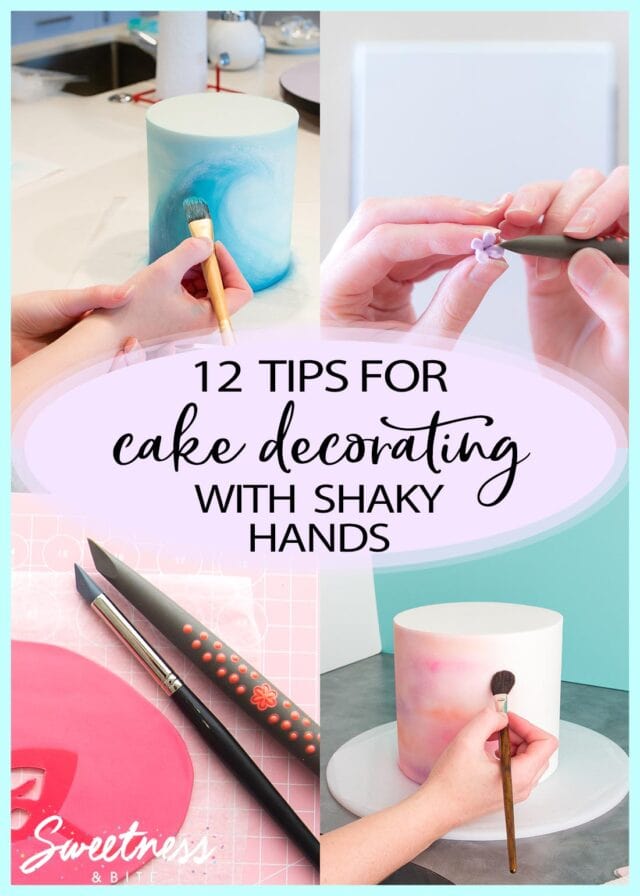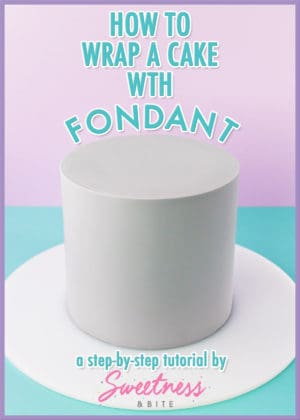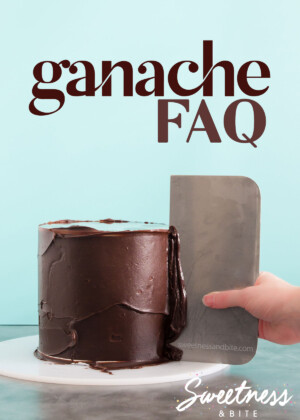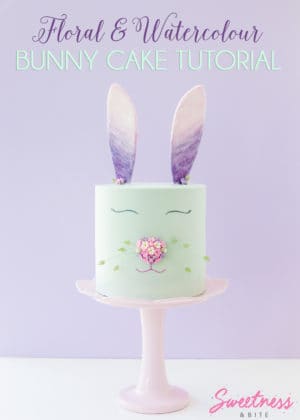Tips For Cake Decorating With Shaky Hands
This post may contain affiliate links to products I recommend. I receive a small commission at no cost to you if you make a purchase using my link.
12 useful tips for cake decorating with shaky hands. Find out how to help keep your hands steady while you decorate, plus some useful tools to make your cake decorating life easier!
If there’s one misconception I’ve heard others say about me since I started making cakes that always makes me laugh, it’s “wow you must have such steady hands!”
This actually couldn’t be much further from the truth. In fact, one of the reasons I don’t often do video tutorials is because sometimes my hands have a mind of their own, and that doesn’t really inspire much confidence in those of you watching me show you how to do something!
I’ve been known to throw cake tools and icing across the room when my hands haven’t been co-operating. Dramatic, I know, but hey, it’s the truth. My hands don’t always work the way I want them to, and it can be pretty frustrating when they don’t.
I know I’m not the only one, as it’s something I see mentioned often in cake decorating groups – people saying there are techniques they wish they could try but they don’t think their hands would be steady enough.
After nearly ten years of making cakes, I’m getting pretty good at finding ways around the parts of cake decorating that are difficult when my hands are playing up, so after chatting a while back with another cake decorator who also struggles with hand tremors, I decided to finally sit down and write out a few tips for cake decorating with shaky hands.
If that sounds like you, then keep on reading, and if you have any tips of your own, I’d love for you to share them with us in the comments.
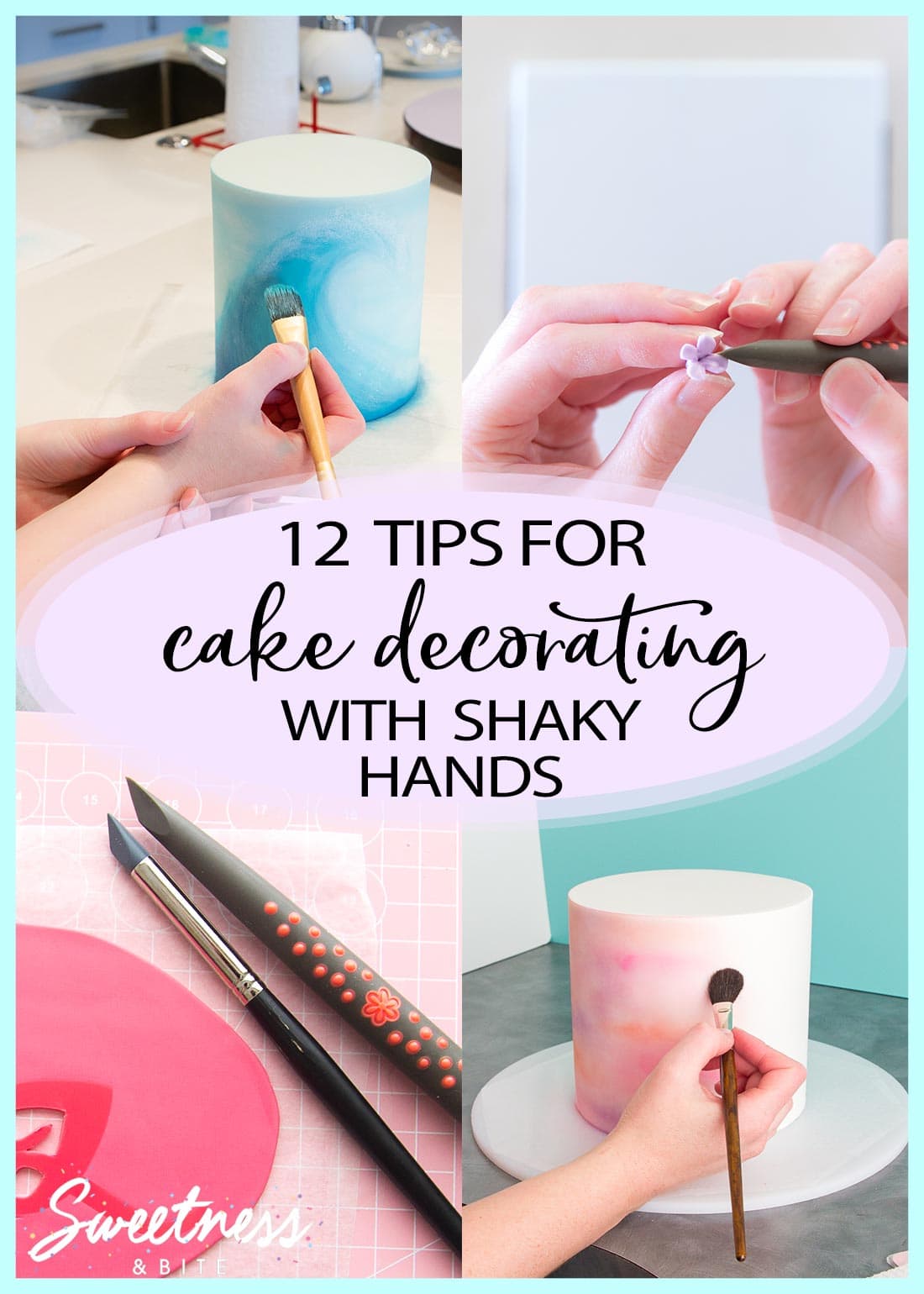
12 tips for cake decorating with shaky hands
1. See a Doctor
While this post is specifically about cake decorating with shaky hands, I feel like I should preface it all by saying that if your hands regularly shake enough that they impact not only your cake making but your daily life, you should get them checked by a doctor if you haven’t already. You can skip right down to tip #2 if that’s not you, but if it is and if your shaky hands impact your daily tasks, you should get looked at by someone who knows what they’re doing. If there is a clear cause of your shakes then they’ll be able to tell you what it is and how to treat it.
My hands were bad enough at one point a few years ago that I couldn’t hold a glass without spilling the contents, so I was referred to a neurologist. He ruled out any serious problems and said the most likely cause was what they call an enhanced physiologic tremor, which is basically just an increase in the natural movement/tremor of the hand. At the time I was incredibly run down and had a lot of other medical issues going on, and once that all eventually calmed down, so did my hands.
These days I find that my hands function reasonably well unless I get super tired (which does happen a lot) or super stressed, but I do still often have trouble when doing super-fiddly tasks, which includes many aspects of cake decorating, so I use all of the following tips to help me manage.
2. Get Some Rest
Speaking of tiredness and stress, many conditions that cause shaky hands are exacerbated by both of those things. You can also be perfectly healthy and yet still have unsteady hands when you’re anxious or feeling exhausted.
We all know that making cakes isn’t always the most stress-free, relaxing pastime, but making sure you get enough rest and take enough breaks can help to keep your hands (and your mind) calm. If you find your hands starting to get strained, or you find yourself getting anxious or holding your breath, it’s probably time to step away for a bit and have a breather.
3. Give Yourself Time
Really the last thing you should want to be doing is rushing to get a cake done. That added stress is a sure-fire way to make hands even shakier.
It helps to give yourself as much time as possible to finish your cake, so for cakes that you know will have fiddly and/or time-consuming details, make sure you give yourself some extra time in your cake decorating timeline.
If you have details like figurines or flowers to make, then try and make them as far in advance as possible. These can be made weeks in advance and stored safely in a box, and having them already sorted will give you more time to work on the rest of the cake.
4. Practice
I know, I know, it’s frustrating to hear someone tell you that if you want to get better at something you need to practice. *insert childish eye roll and foot-stamping here* But if there is something you’re struggling with then it really does help to practice the technique, and the ideal time to do that is before you have the pressure of making it for a special occasion. It will give you a chance to figure out what is working for you and what isn’t, and to have a think about how you can make it work. And that leads us right along to…
5. Switch It Up
When something isn’t working, try something different. It’s simple to say, but sometimes you just need to break it down and come up with creative ways to improve what you’re struggling with.
Sometimes it can be difficult to paint smaller details with a paintbrush, so you could consider trying an edible pen/marker instead. You may find you have better control and less risk of splotches or smudges. If painting a whole cake seems daunting, consider something like my simple watercolour technique using petal dust, that is easily buildable and makes it more difficult to make a mistake.
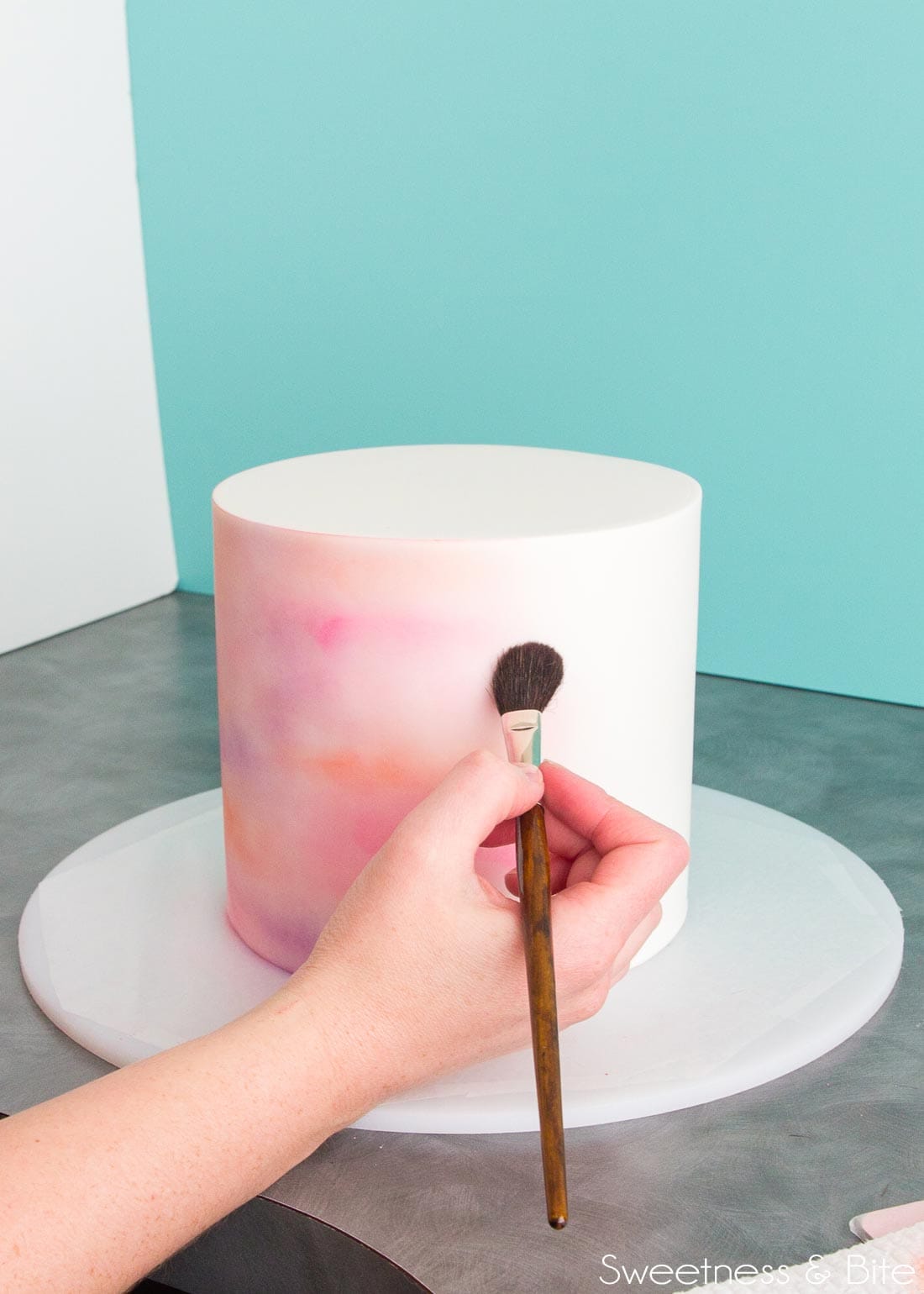
Have you found yourself trying to smooth fondant with a standard fondant smoother but it slips out of your grip? Maybe try a flexible fondant smoother that fits in the palm of your hand instead. You could even stick a piece of non-slip mat to one side of the smoother, to help it grip against your hand.
These smoothers are also very useful if you accidentally bump and dent your fondant, a bit of gentle rubbing with the smoother will help to minimise the dent. (And if that doesn’t work, don’t panic! Try using some fondant “gunge” to fill the hole).
If you’re trying to pipe with buttercream or royal icing and you find you have to squeeze hard to get the icing to come out, you may need to adjust the consistency of your icing. Softer icing requires much less effort to pipe, so soften or thin down your icing just until it’s easier to pipe.
It also helps to not over-fill your piping bag. You will have much more control will a smaller amount of icing in the bag, and it will also require much less effort to squeeze the bag, which will help keep your hand steady. (Thanks to Shelley-Anne for reminding me about this tip on Facebook! 💜)
Try and think outside the ol’ box and figure out if there is another tool, product or technique you can try that might work better.
6. Get the right tools
Tools that are larger or have larger handles can be easier to hold and manoeuvre. I also find that paintbrushes with ergonomic grip handles give me a bit more control.
Modelling tools like Sugar Shapers are excellent to use as they are quite thick and also have grippy dots on them, so they don’t slip around in your hands.
You can see here the difference between the Sugar Shaper on the right and a standard “paint shaper” on the left. There are also smaller Sugar Shapers that are smaller and thinner but still have those handy (pun intended) grippy spots on them.
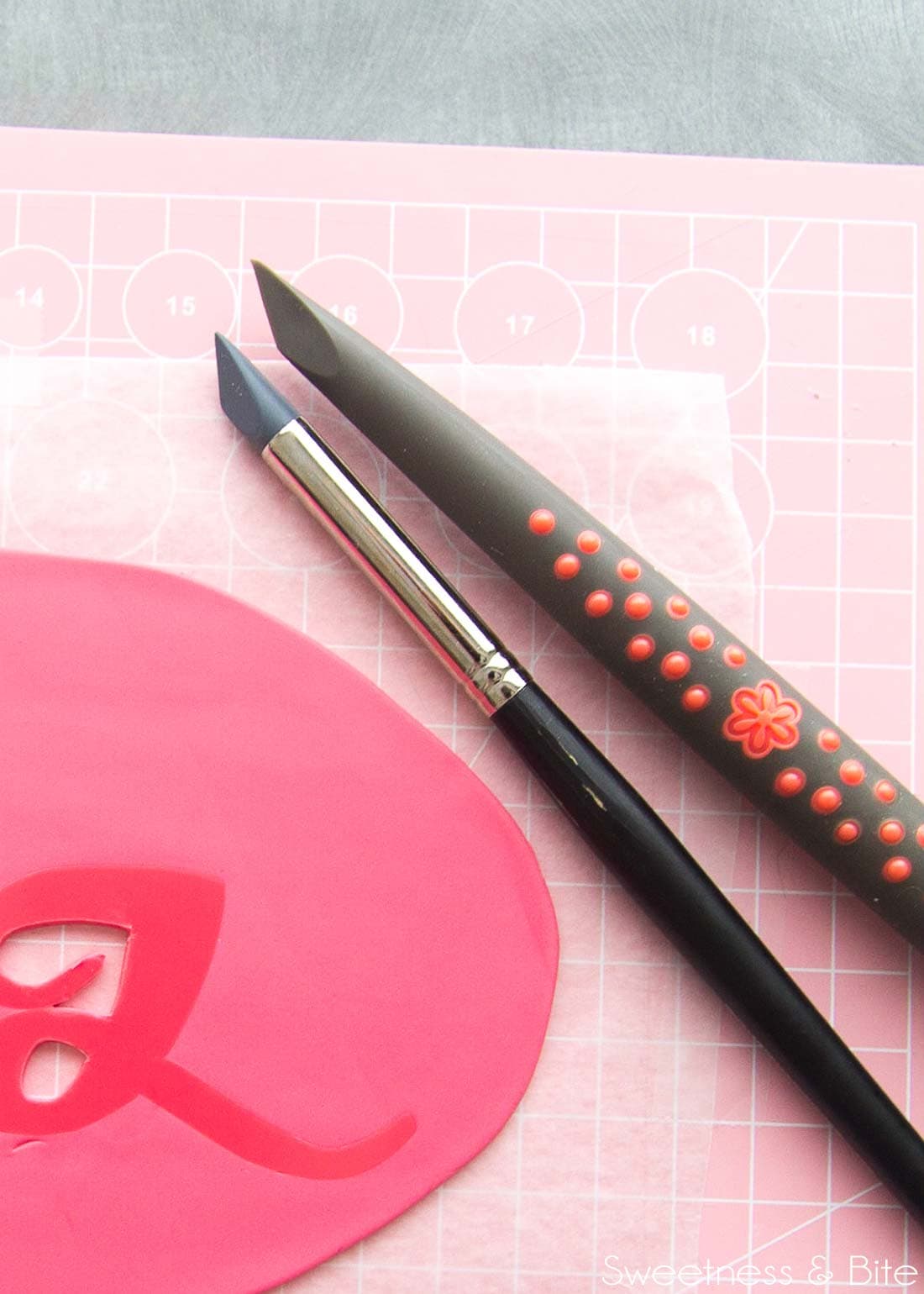
Offset spatulas are great for icing cakes as there is a bit less chance of gouging your cake than there is with a regular straight one. Bonus points if you find one with a more ergonomic handle like these Wilton ones, which tend not to slip in your grip.
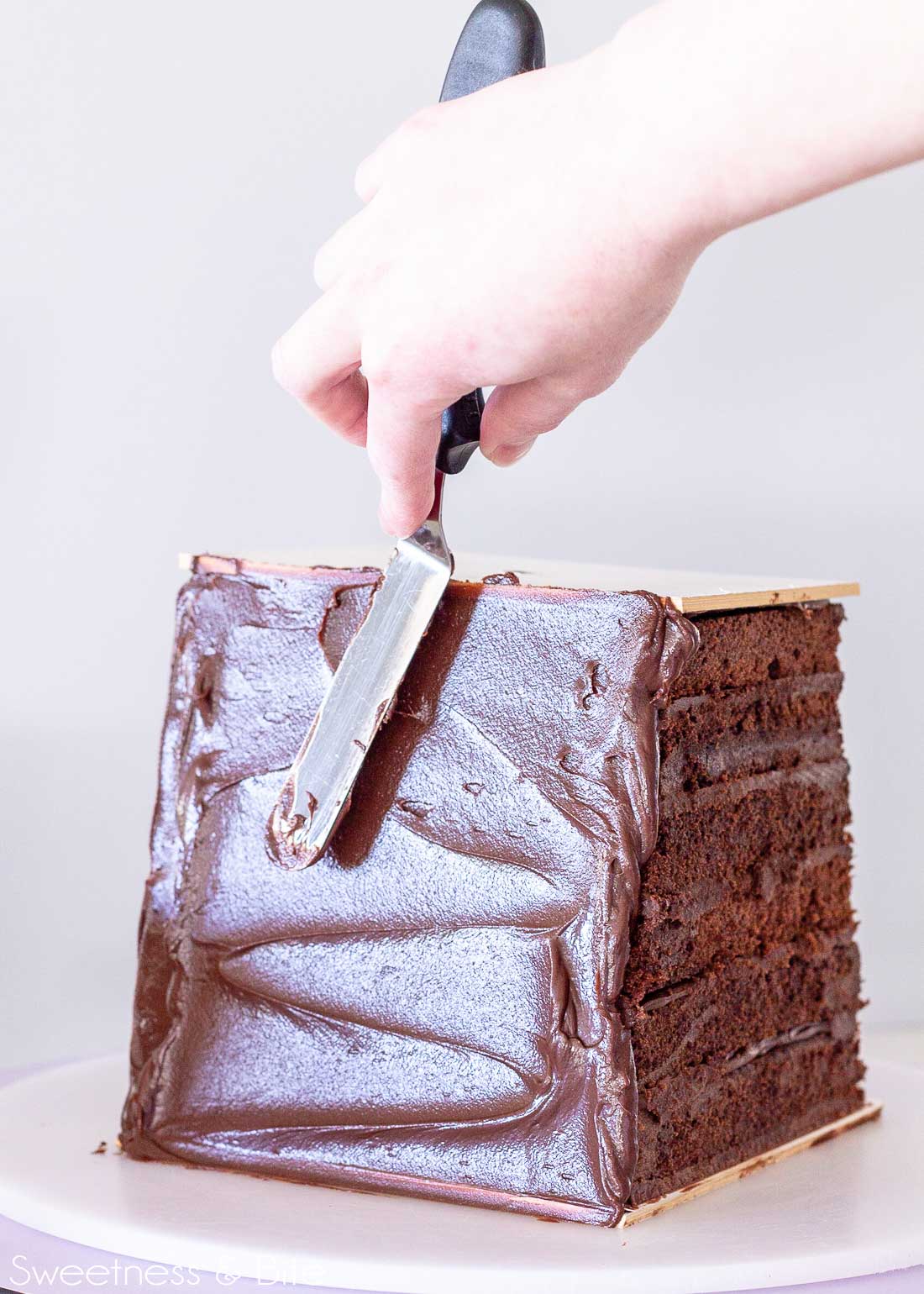
7. Get The Right Angle
If you’re finding it hard to do a particular detail on a cake, try coming at it from a different angle. I often find that if my wrist is bent at a particular angle I have much less control. You could try elevating your whole cake or figurine on a cake stand, or box, or anything really that is stable and will lift it up to a more comfortable height. A tilting cake turntable could also be a good option.
There are some things that I find easier to work on when I’m standing up, but mostly I tend to sit at the bench as it’s easier to keep my whole arm stable and supported by the bench.
You could also consider using an adjustable chair like an office chair or adjustable bar stool, so you can crank yourself up or down to find a comfortable spot.
8. Get Some Support
It’s hard for anything or anyone to stay stable without a little support, right? We all need a helping hand sometimes. It might be an obvious one, but don’t underestimate the added support you can get from using both hands. Using your non-dominant hand to support your other hand while you work can help keep things steady.
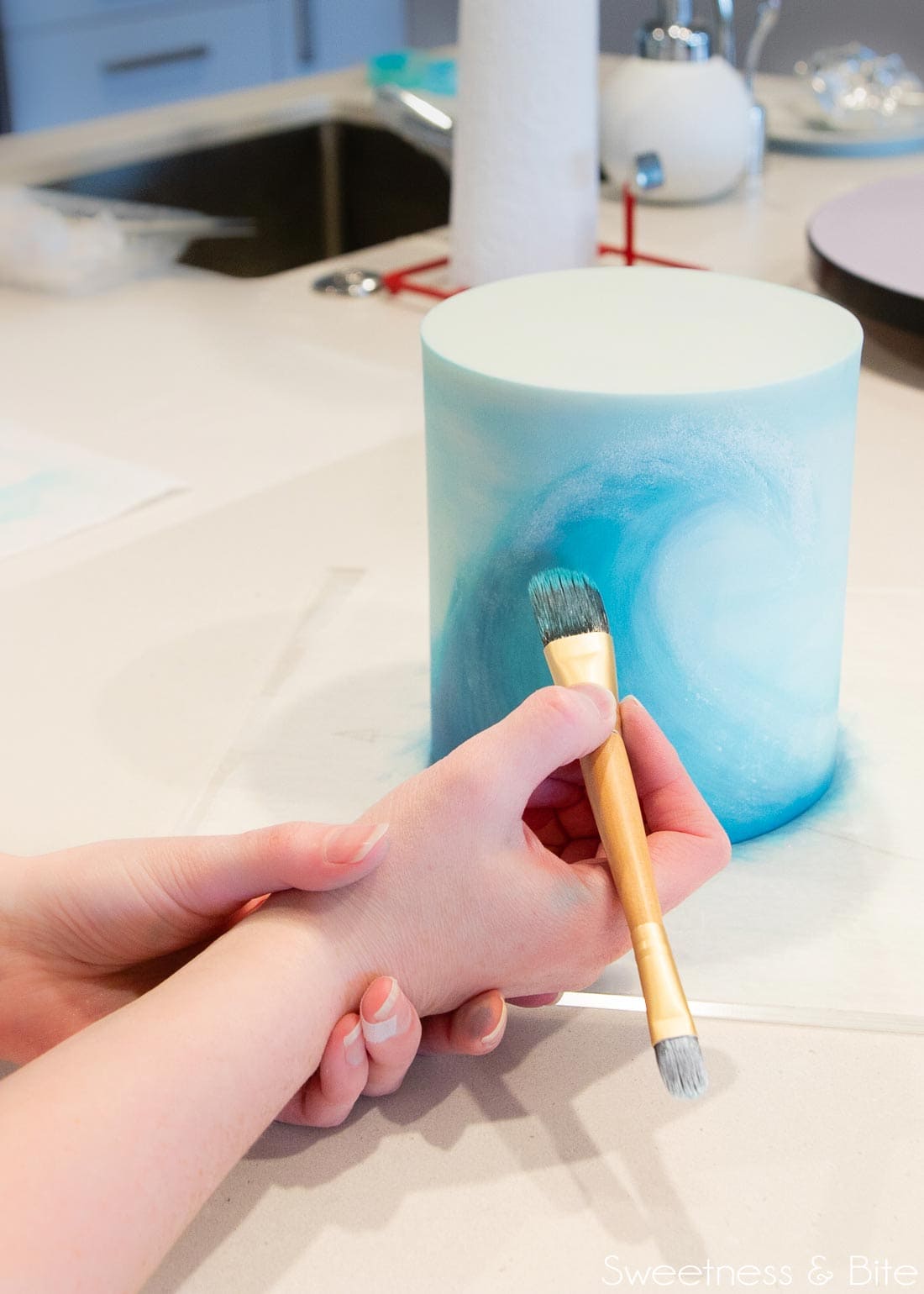
You could also find that leaning your wrist or elbow on something can help. I often rest my wrist on the edge of my turntable, but you could also use anything that will get your wrist to the height you need.
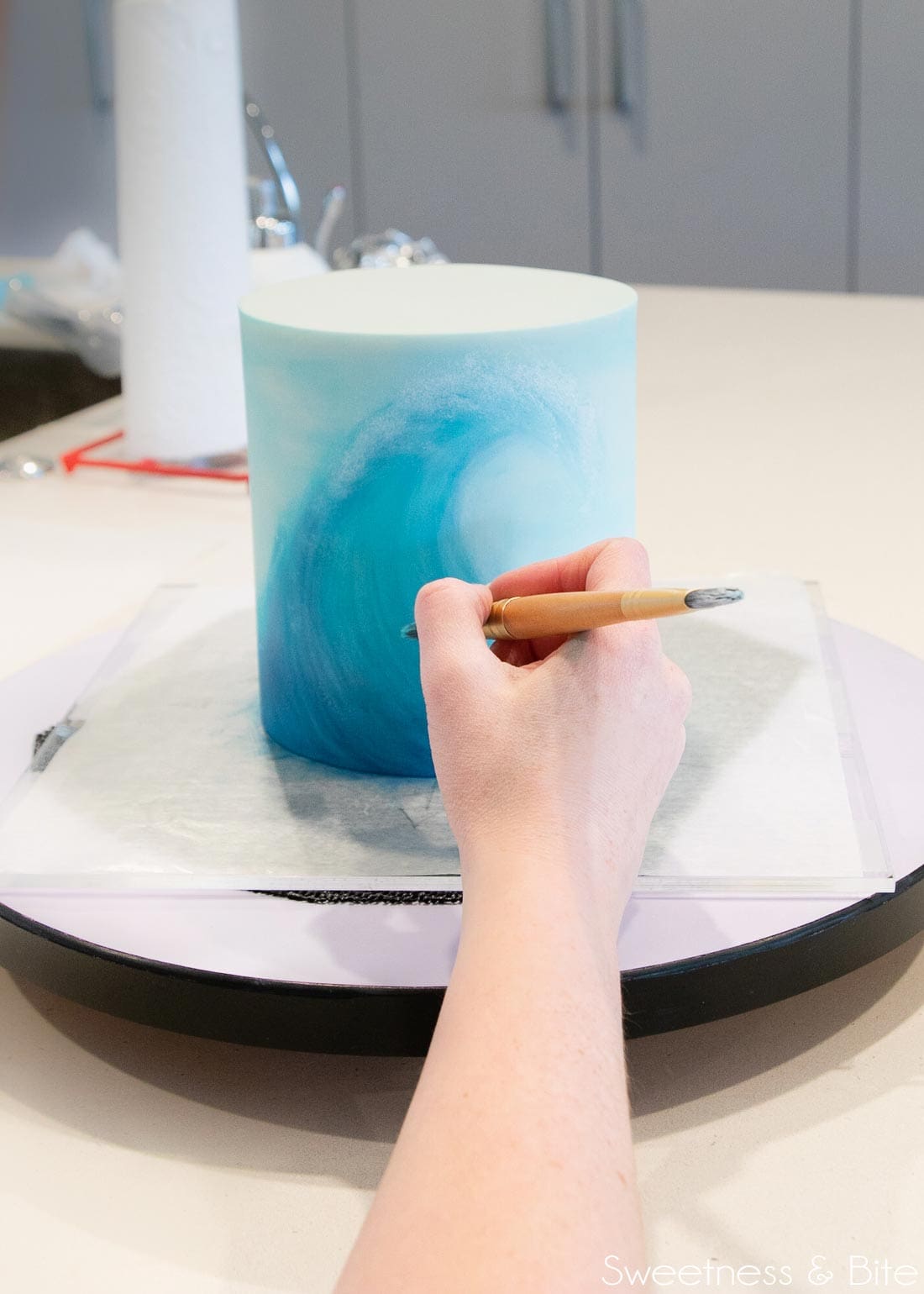
9. Scale Up
While I love me some fiddly little details on a cake, sometimes bigger really is better.
Bigger things don’t require such fine details, so consider scaling things up and giving yourself more room to play with. Sure, everyone likes a cute and dainty figurine, but if it’s a toss-up between a rough and perhaps even somewhat deformed-looking tiny figure or a slightly bigger but more perfectly formed piece, we know which is going to look better.
Oversized flowers will be easier to work on than teeny tiny ones. You could also consider making the petals a little thicker to reduce the risk of breaking, just make sure you factor in a little more drying time, as petals that aren’t fully dry are also more prone to breaking.
10. Always Make Extra
If there is a particularly fragile detail that is critical to the cake, whether it’s a flower, a sugar high heel, a gumpaste number or name topper, then I highly recommend making more than one, if at all possible.
This is something I do not only because I don’t always trust my hands, but because there are so many things that can happen to pieces like these. They could fall when you’re transporting them, if you’re caking from home then your kid or dog could get hold of one (we’ve all heard those stories before, haven’t we?), and sometimes things just crack or break for no apparent reason when you’re adding them to the cake.
These things can often be mended with a little sugar glue or royal icing, but sometimes they can’t. The last thing you want to be doing is attempting to remake a cake topper at the last minute. Much better to have a backup all ready to go.
Flowers are great things to make extras of, as if you don’t end up needing to use them you can pack them away in a box and have them on hand for last-minute cakes, or if you find yourself short a flower or two in another arrangement.
11. Cut the Caffeine, and Don’t forget to Eat
Don’t panic, I don’t mean cut out caffeine completely! But it’s pretty well known that too much caffeine can give you the shakes. If you’re a regular coffee (or tea) drinker then you’ll also know that not having your daily cuppa quota can also leave you feeling less than great, so your best bet here is to just try not to drink a whole lot more than you usually would.
I’m pretty terrible at remembering to take proper food breaks when I’m in the middle of an elaborate cake, but keeping your blood sugar stable by eating regular meals and snacks will also help keep your hands working at their best. It also stops me from just relying on constant cups of tea to keep me going, and over-caffeinating. Win-win.
12. Be Honest
Last but not least is one that I wished I’d learned much earlier than I did. If someone asks you to make something and you’re not convinced you can do it, then be honest. Either tell them it’s not something you can do or better yet – suggest something similar that you can do. Some of my favourite cakes are ones that were initially supposed to be something else but the design was tweaked to make it more manageable for me and it ended up looking better than the original design.
You may have to be a little more creative with your designs and how to go about bringing them to life, but it will cause you much less stress in the long run.
Be Kind to Yourself
I’m not adding this as one of the 12 tips because it’s probably actually a good one for us all to remember, and actually possibly the most important tip in the whole post. It’s something that I need to be reminded of regularly when I go into full drama-queen mode!
Love, go easy on yourself! If there is something that you are struggling with, or that you really just can’t do, don’t beat yourself up about it. I know cake decorators often hate the saying “it’s just cake” (especially if it’s a customer complaining about the price), but at the end of the day, it is just cake.
The world won’t stop turning and a party won’t be ruined just because one tiny detail on a cake isn’t perfect. And even if the party is was, well that’s not the kind of party I want to be at anyway.
People come first, cakes come second.
So there are my 12 tips for cake decorating with shaky hands. Do you have any other tips that help you? Feel free to share them with us below! 👇🏻
Big thanks to Sam from Miss Sugar Bliss for giving me her input on this post, and for the chats we’ve had about our different experiences cake decorating with shaky hands 💜
Natalie
xx

